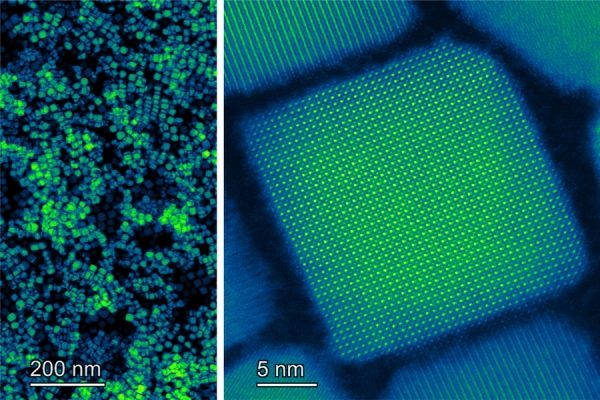Using novel materials that have been widely studied as potential new solar photovoltaics, researchers at MIT have shown that nanoparticles of these materials can emit a stream of single, identical photons.
While the work is currently a fundamental discovery of these materials’ capabilities, it might ultimately pave the way to new optically based quantum computers, as well as possible quantum teleportation devices for communication, the researchers say. The results appear today in the journal Nature Photonics, in a paper by graduate student Alexander Kaplan, professor of chemistry Moungi Bawendi, and six others at MIT.
Most concepts for quantum computing use ultracold atoms or the spins of individual electrons to act as the quantum bits, or qubits, that form the basis of such devices. But about two decades ago some researchers proposed the idea of using light instead of physical objects as the basic qubit units. Among other advantages, this would eliminate the need for complex and expensive equipment to control the qubits and enter and extract data from them. Instead, ordinary mirrors and optical detectors would be all that was needed.
Read more at Massachusetts Institute of Technology
Image: Microscopic imaging shows the size uniformity of the perovskite nanocrystals. Credits: Courtesy of the researchers


